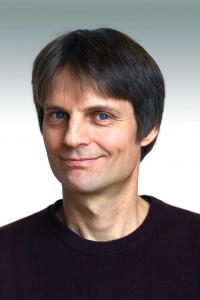Mechanics of cancer cell invasion in vivo
Single-cell or collective invasion results from coordination of cell shape, deformability and actin dynamics relative to the tissue environment. When monitored in vivo, using intravital multiphoton second and third harmonic generation and fluorescence microscopy, tissue microniches provide invasion-promoting tracks that enable collective migration along tracks of least resistance. As main routes, non-destructive contact-guidance is mediated by preformed multi-interface perimuscular, vascular and –neural tracks of 1D, 2D and 3D topography. 3D ultrastructural analysis reveals predefined tissue conduits (“highways”) of defined geometry, nanotropography and molecular composition as predominant routes of invasion by contact guidance comvbined with a cell “jamming” mechanism. Consistently, spheroids of mesenchymal melanoma or sarcoma tumor cells switched from single-cell to collective invasion modes when confronted with 3D collagen matrices of increasing density, including gain of cell-to-cell junctions, supracellular polarization, suggesting cell jamming imposed by tissue confinement. Targeting of beta1/beta3 integrins induces unexpected plasticity of invasion, including collective and amoeboid single-cell dissemination, followed by enhanced systemic dissemination and micrometastasis, implicating a role of integrins in cell-cell cooperation and integrin-independent dissemination as effective route to metastasis. In conclusion, cancer invasion is maintained by physicochemical programs that balance cell-intrinsic adhesion and mechanocoupling with encountered physical space and molecular cues.
Bio
 Peter Friedl was born and raised in Germany, received his M.D. degree from the University of Bochum in 1992 and the Ph.D. degree from the McGill University, Montreal in 1996. Since 2007 he his directing the Microscopical Imaging Centre of the Radboud University Nijmegen Medical Centre, Nijmegen, Netherlands and since 2011 holds a joint-faculty position at the Universtiy of Texas MD Anderson Cancer Center, Houston, TX. His research interest is the mechanisms and plasticity of cell migration in immune regulation and cancer metastasis, with emphasis on cell-matrix adhesion, pericellular proteolysis and cell-cell communication during migration. His laboratory identified pathways determining diversity and plasticity of cell migration, collective cancer cell invasion, and the contribution of migration pathways to immune defense and cancer resistance.
Peter Friedl was born and raised in Germany, received his M.D. degree from the University of Bochum in 1992 and the Ph.D. degree from the McGill University, Montreal in 1996. Since 2007 he his directing the Microscopical Imaging Centre of the Radboud University Nijmegen Medical Centre, Nijmegen, Netherlands and since 2011 holds a joint-faculty position at the Universtiy of Texas MD Anderson Cancer Center, Houston, TX. His research interest is the mechanisms and plasticity of cell migration in immune regulation and cancer metastasis, with emphasis on cell-matrix adhesion, pericellular proteolysis and cell-cell communication during migration. His laboratory identified pathways determining diversity and plasticity of cell migration, collective cancer cell invasion, and the contribution of migration pathways to immune defense and cancer resistance.
